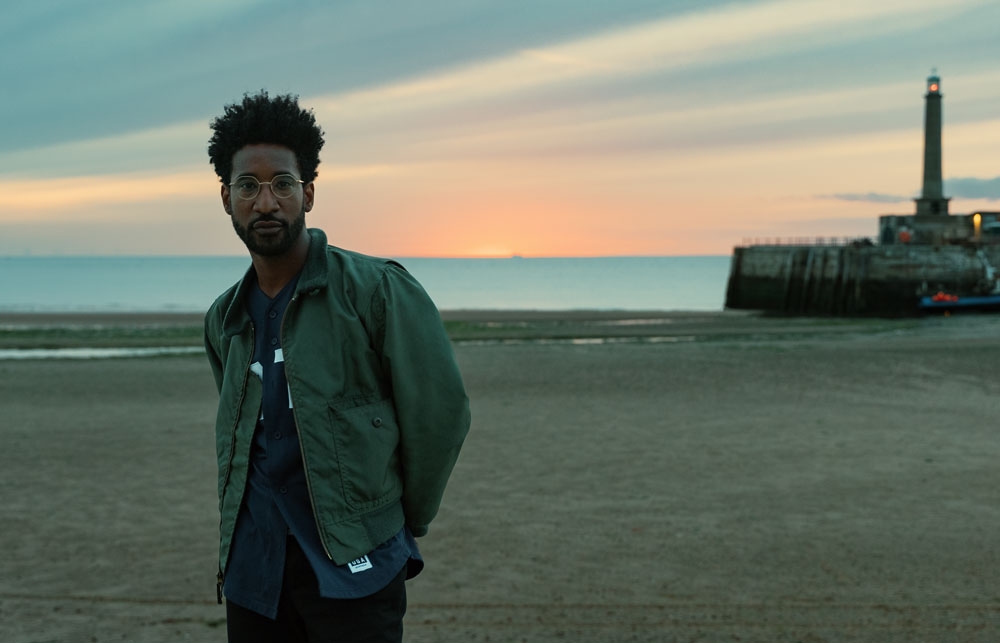DG: Is there a historical connection to this color choice and their histories? Or is this something that you've just quietly crafted for yourself?
I think it's a bit of both. So a lot of my practice is inspired by writing. I do a lot of writing before I do a show or a painting. And even before I was doing any of this work, I was doing a lot of writing in college. When I moved to New York I revisited this writing and added more to it and created more stories. And some of them of course, like purple, like violet, are colors of royalty. It's an expensive color. And I feel like that's undeniable in terms of the research of that. I also think it's amazing that the color obviously has so many different connotations; as a queer kind of person, a queer, black person, elevating me and my community to these places of royalty or importance, and feeling expensive, and all those things I think are interesting.
DG: Is that connected then to the fabrics, and your fashion choices in this particular time period that you're crafting for yourself?
So this work, this particular painting, is of William Dorsey Swann, who was not even the “first black drag queen,” but allegedly the first drag queen in America, yeah, it's in quotes. So basically there was a newspaper clipping that was written in 1880 in Washington DC, that said the queen was raided, basically a newspaper article about a party that she was throwing, these balls that she was throwing that were raided by the police. And that was the first time that someone in a newspaper printed about a drag queen or this kind of thing. What she's wearing is very typical of what she would be wearing during that time period, these more lavish ball gowns. I'm working on a book project right now where I've been researching queer figures throughout history starting from the 1800s.
DG: So, you are attracted to more of history’s b-sides, stepping away from the icons and stories that we know already?
Exactly. And going through, again, because my practice is based in design, the print ephemera, and going to the archives, and looking at newspaper clippings and lithographs, and finding these stories about how black queer people were written about before we had our own autonomy agency to put those stories into print for ourselves, but also just even knowing who they are.
DG: When was the first time you saw yourself represented through an artwork of any kind, be it music, visual arts, or another form?
I love this question. I guess something that was really pivotal and I don't know if this is the first time, but the really pivotal moment was Tenth magazine, which is a black, queer fashion and lifestyle magazine that was founded in 2014, maybe 2013. So it's pretty new. It was founded by Khary Septh, André Verdun, and Kyle Banks, based in New York. I just moved to New York out of graphic design school and was on Facebook, and I saw this ad that said, "Black, Gay, Unbothered. Order today." And I was like, what is this? Then I clicked, and it was a magazine. And I was like, a magazine about black gay people? What is this? So I ordered it, and when I got it in the mail a couple of days later, I was flipping through so slowly. I got halfway through the book and I was sobbing.
It was the first time that I had ever seen a magazine that had beautiful images of black queer people written by black queer people, high art direction, super fashion, all the brands, all the things. And I was like, it was for me. So of course I closed the magazine. I emailed them immediately, and I was like, "What is this? This is amazing. I want to work with you guys. Let me help you. Let me do anything." And I have been working with them ever since. So yeah, that was really kind of amazing. And from that whole process of working with the Tenth magazine, that whole gang of guys, and women, and people, I was able to meet all these amazing black animators, illustrators, writers, and fashion people. So suddenly in New York, my community of black queer creatives that I was so desperately searching for, that I did not have in undergrad was there.











